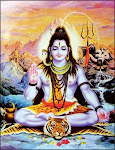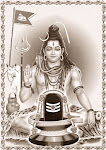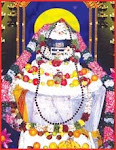HINDUISM
Higher Hindu philosophy
Six classical “Visions” (Darshanas) of philosophic wisdom emerged with the first flowering of Hinduism during the era of Guptan Imperial unification. Higher Hindu learning generally began with memorizing one or more of the Vedas and seeking to achieve control over at least one of those six philosophic systems, as an aid toward attaining Moksha. yoga, now given systematic form, would as a rule be studied by all “twice-born” Hindus, at least in its basic techniques.
Sankhaya (“the Count”) was often studied together with Yoga, both systems considered very ancient, probably pre-Aryan. Sankhyan philosophers viewed the world as basically dualistic, consisting of “Matter’ (Prakriti), from which, in all, twenty-three “objects” of thought, substance, and sensory perceptions evolved, and “Spirit” or “Soul” (Purusha), which stands alone, much the way later Atman would from the body it animates. purusha is masculine, literally meaning “Man,” and Prakriti is
Mahathma Gandhi
feminine; hence the dualism is also sexual in nature. The system, very much like Jainism, is atheistic in its self-initiating, self-regulating, and self-perpetuating character, with as many “Souls” as there are bodies requiring animation.
Human behaviour
Three “strands’ (gunas) of human nature were first posited by Sankhya, later to be reiterated in the Bhagavad Gita and other Hindu texts of more recent vintage: sattva (“true”), rajas (“Passionate”), and tamas (“dark”) qualities. Good people obviously have a preponderance of the sattva guna, passionate people of the rajas, and dull or useless folk, of the tamas strand. Such was the earliest Indian venture at psychological analysis, similar to the ancient Greek “humors” approach, or what we might nowadays call a chemical glandular analysis of human behaviour.
Hindu logicians developed their own highly sophisticated “vision” of philosophy, called Nayaya (“Analysis”). Students of Nayaya hoped to attain Liberation logically, which is perhaps why that school attracted a much smaller following than several of the others, less rigorous in their epistemological analyses.
Providing evidence
The five-legged Nayaya syllogism is more complex than its Greek counterpart, providing evidence with another specific example to prove a general proposition, such as “The mountain is on fire.” The reason of “smoke” coming from the mountain is not quite enough for cautious indian thinkers; hence an example, such as “In the kitchen, where there is smoke, there is fire,” follows.
Then it is possible to apply that familiar example to the case of the mountain, concluding. “Therefore, there is fire on the mountain.” Ingenious ancient Indian philosophers also reasoned that it was possible to feel both cold and hot upon entering the same room, since how one felt in a new environment really depended on the atmosphere in the place just left. Hence coming from a hotter room one would feel cold, and from a colder room, hot, in exactly the same temperature.
Specified divinity
A fourth Indian classical philosophic system, usually compared to our “atomic” analysis of the physical world, is called the Vaisheshika (“Individual Qualities”) school. All nature was viewed as composed of different “atoms,” each of which is eternal, but combines with other atoms to form many differing substances that we generally call “matter”. Like Sankhya, Vaisheshika posits a dualism of “soul” and everything else, but there is also a specified divinity, Brahma, who starts the atoms moving at the dawn of each cycle, and finally winds things down by fragmenting complex molecular structures, breaking them into primal atomic units at the end of his “day” of many millions of years. Logicians generally mastered this “Atomic” school as well, traditionally becoming science “majors,” so to speak, helping to keep alive India’s remarkable ancient precocity in mathematics and several other sciences that would in modern times reemerge with Indian Nobel Laureate leadership in several scientific realms of pure research.
Swami Vivekananda
Ancient sacrifices
Disciples of a Vedic Purva-Mimansaka (“Early Inquiry”) school focused their attention narrowly on the study of Rig Vedic hymns and the recreation of Soma altars at which ancient sacrifices to Indra, Agni, Varuna, and other Vedic gods would be performed. This residual Brahmanism has been of some use historically, linguistically, and ethnographically, but could hardly be expected to yield new philosophic insights. The last of the six “vision,” Vedanta “End of the Vedas”), did, however, prove fruitful in that regard, and its many schools have proliferated worldwide.
Vedantists have been the most brilliant and famous of all Indian philosophers, starting with the great Shankara, a South Indian Brahman, who taught mostly during the first two decades of the ninth century, developing his “nondualistic” (Advaita) school of Vedanta, which was later elaborated upon by recent luminaries such as Swami Vivekananda, Ramakrishna’s “Saint Paul,” and Dr. S. Radhakrishnan.
Invisible soul
Upanishadic mysticism was the basis of Shankara’s teaching. His only “reality” was Brahman, the transcendental universal Soul, identical to Atman, the invisible human Soul. Everything we thought we saw in the world around us, the world of “name and form,” was Maya, “Illusion.” This grand illusion deceived us, played “games” and “tricks” on us, because of our cosmic ignorance. Shankara elaborated upon earlier Upanishadic arguments used to “prove” that invisible spirit alone pervades the universe as the Real, such as sage Uddalaka had developed in enlightening his son Shvetaketu:
As the bees, my dear, prepare honey by collecting the essences of different trees and reducing the essence to a unity, and are not able to discriminate “I am the essence of this tree,” “I am the essence of that tree” - even so, my dear, all creatures here, though they reach Being, know not “We have reached Being.”
Whatever they are in this world, whether tiger, or lion, or wolf, or boar, or worm, or fly .... that they become. That which is the finest essence - this whole world has that as its soul. That is Reality (Brahman). That is Atman (Soul), That art thou (Tat tvam asi).
Courtesy: Hindu Illustrations
To be continued
--------------------------------------------------------------------------------
Mystics speak the voice of the Almighty
K.S. Sivakumaran
As we all know the humankind lives in three different planes - physical, intellectual and spiritual. The physical plane is the base without which the other two cannot be built up.
This reminds us of a little poem which emphasizes the need of nourishing the body. The intellectual and spiritual needs came in much later and maybe pushed aside unceremoniously if the physical need is urgent. The poet says that self-respect, caste, education, resolution, discretion, clarity, permanence, spirituality, forbearance and sex will be thrown to the winds if hunger is not appeased. Any shade of ideology touching on this basic need would naturally appeal particularly to the underdogs under-privileged that form the bulk of the humankind. All that is considered of value could be devalued and spurned on or totally destroyed.
Could religion contribute anything towards the welfare of humankind in general? The answer is in the affirmative. We have so many religions and their subdivisions are innumerable. In fact that is a great advantage because religious thoughts could be penetrative everywhere and influence the masses and the intellectuals alike.
It is easy to have religions and have superficial beliefs in their teachings, but it is very hard to lead a really religious life which could be directed to lead a really religious life. Mahatma Gandhi and Vinobhave were striking examples. They were not mythical personalities. They lived in the time of older generations amongst us and achieved great benefits for the toiling masses without shedding a drop of blood. This was because they practiced what they preached. Dry intellectual conceptions cannot be swallowed without coating of noble feelings.
Thaayumaanavar lived at a time when Vedanta of Aadhi Shankarar, the qualified Vedanta of Ramanujan and Siddantha of Meikandan created much confusion of thought among their followers. With one grand sweep of his all embracing ideal expressed in unmistakable words of precision he made them see the essence of their teaching His knowledge was so vast and penetrating that nobody could have labelled him as belonging to any particular sect. The climax of his ideal is reached step by step shedding ignorance all the way.
Having reached the top in the chapter entitled “The Mystery of Sithambaram”; he then describes in the rest of the verses his experiences of his divine life.
If one wishes to have a taste of beautiful poetry embodying the most mystical, cultural, emotional, and philosophical side of the Hindu, Thaayumaanavar would be the choice.
I am not sure whether Thaayumaanavar’s poems are translated into English. Those of us who may not know Thamil should read in translation of his words that are uttered in the name of the Almighty. Mystics and sages speak to us the insight of the almighty.
--------------------------------------------------------------------------------
Death in Hinduism
Gyan Rajhans M.Sc. (Eng.), P.Eng,CIH,ROH
*****
“Death is not extinguishing the light; it is putting out the lamp because dawn has come.”
- Rabindranath Tagore
*****
In Hinduism, death is not viewed as an anathema or the end of all but only a step in the existence of soul, a temporary cessation of physical activity. Since Hindus believe in reincarnation and the trans-migration of the soul, they approach the subject of death without much fear.
At 65, Gyan Rajhans, scientist and Hindu spiritual thinker, contemplates upon the inevitable end of life - death, and comes up with words of advice from Hindu scriptures about what should be the right attitude to death, and how one should approach it.
“As I am growing older, I am beginning to think of life after death. The fear of death is founded upon the love of life, which is the deepest instinct in human nature. I am talking about death as a natural phenomenon; death as it makes its presence felt through disease and through old age, is hugely different from deaths due to accidents and natural calamities, for the latter is a totally different directive process, which I am yet to understand.
The fear factors
Let us first accept the fact that most of us loathe death because of the uncertainty of its time and place. Failure to survive when the time comes is the basic fear. The unwillingness to face this fear with proper understanding is due to the emphasis we lay upon the physical body.
It is also based upon an innate fear of loneliness due to the loss of those we have been familiar with during our worldly existence.
Loneliness after death
The thought of loneliness after death establishes the fact that there is life after death. Simply put, there are now many evidences in favour of the existence of soul consciousness after death based on reams of anecdotes of “out-of-body” experiences. The loneliness after death is nothing as compared to the loneliness at birth. At birth, the soul finds itself in new surroundings and in a body which is at first totally incompetent to take care of itself or to establish intelligent contact with surrounding conditions for a long period of time.
The child at birth has no recollection of identity of the family members with whom he finds himself in relationship.
This loneliness only disappears gradually as he comes in contact with those who are congenial to him and eventually becomes his friends and families.
Afterlife consciousness
After death, however there is no loneliness. The person after death finds those who he knows and who have been connected with him in physical plane. They may be his parents, his relatives and his friends who died before him. Moreover, after death the person is also conscious of those friends and family members who are still alive.
He can see them, he can tune in on their emotions, and also upon their thinking. (Read the biography of Sir Mackenzie King, the ex-Prime Minister of Canada, a devout Christian, who believed in an afterlife and communicated with his dead relatives in seances.)
Can we welcome death?
One must accept the fact that the consciousness remains the same whether in physical body or out of it. This consciousness continues to develop with even greater ease than when limited and conditioned by the brain consciousness while in physical body. Death releases the individualized life into a less cramped and confined existence. Therefore, one has no need to fear death or anything that lies beyond it. In fact, one should welcome it, because one will be making a transition to a higher consciousness. Freedom from the limitations of the physical body is of real beneficence.
Let the soul live on...
The Bhagwad Gita talks about the eternal soul and the necessity for that soul to live spiritually, constructively and divinely within the physical body. So, why not make our physical existence as pleasant as we can for others so that they will remember us for years afterwards? What have we to lose?
--------------------------------------------------------------------------------
Principal universal architect in Hinduism Continued from Jan 8
Vishwakarma Puja is celebrated by all industrial houses, artists, craftsman and weavers. The festival is observed on the Kanya Sankranti Day (September) which follows the Ganesh Puja.
God Siva
Legends According to mythology it is Vishwakarma who designed the triloka; the tripartite universe consisting of the Heavenly realm and worlds, the Mortal realm and worlds and the Netherworldly realm and worlds. Vishwakarma is also credited for creating the missiles used in the mythological era, including the Vajra the sacred weapon of Lord Indra (a parallel of Zeus’ thunderbolts) from the ribs of sage Dadhichi.
He is regarded as the supreme power according to Rig Veda, the very essence of excellence and quality in creation.[citation needed] In the state of Bengal it is celebrated much before Dushhera which falls roughly in or around in the month of September.
Architectural Wonders
Hindu mythology describes many of Vishwakarma’s architectural accomplishments.
Through the four yugas (aeons of Hindu mythology), he had built several towns and palaces for the gods. In chronological order, these were Swarglok (Heaven) in Satya Yuga, Lanka in Treta Yuga, Dwarka (Krishna’s capital) in the Dwapar Yuga and Hastinapur and Indraprastha in the Kali Yuga. The Jagannath Temple is a sacred Hindu temple in Puri, famous for its enormous statues of Krishna and his siblings Subhadra and Balarama, of which Vishwakarma is considered the sculptor.
Sone Ki (of Gold) Lanka According to Hindu mythology, ‘Sone ki Lanka’ or Golden Lanka was the place where the demon king Ravana dwelled in the “Treta yuga.” As we read in the epic story Ramayana, this was also the place where Ravana kept Sita, Lord Ram’s wife as a hostage. There is also a story behind the construction of Golden Lanka. When Lord Shiva married Parvati, he asked Viswakarma to build a beautiful palace for them to reside. Viswakarma put up a palace made of gold! For the housewarming ceremony, Shiva invited the wise Ravana to perform the “Grihapravesh” ritual.
Traditional sources
After the sacred ceremony when Shiva asked Ravana to ask anything in return as “Dakshina”, Ravana, overwhelmed with the beauty and grandeur of the palace, asked Shiva for the golden palace itself! Shiva was obliged to accede to Ravana’s wish, and the Golden Lanka became Ravana’s palace. Again, the traditional sources point to Mahamaya as the architect and his daughter Mandodri married Ravana.
Krishna
Dwarka Among the many mythical towns Viswakarma built is Dwarka, the capital of Lord Krishna. During the time of the Mahabharata, Lord Krishna is said to have lived in Dwarka, and made it his “Karma Bhoomi” or center of operation. That is why this place in northern India has become a well known pilgrimage for the Hindus.
Hastinapur In the present “Kali Yuga”, Viswakarma is said to have built the town of Hastinapur, the capital of Kauravas and Pandavas, the warring families of the Mahabharata. After winning the battle of Kurukshetra, Lord Krishna installed Dharmaraj Yudhisthir as the ruler of Hastinapur. This is a local legend not borne out by Mahabharata.
Indraprastha Viswakarma also built the town of Indraprastha for the Pandavas. In Mahabharata, the creator is Maya, the other divine architect. The Mahabharata has it that King Dhritrashtra offered a piece of land called ‘Khaandavprastha’ to the Pandavas for living. Yudhishtir obeyed his uncle’s order and went to live in Khaandavprastha with the Pandava brothers.
Later, Lord Krishna invited Viswakarma to build a capital for the Pandavas on this land, which he renamed ‘Indraprastha’. Legends tell us about the architectural marvel and beauty of Indraprastha.
Courtesy - Hinduism (Internet)
DAILYNEWS.LK










